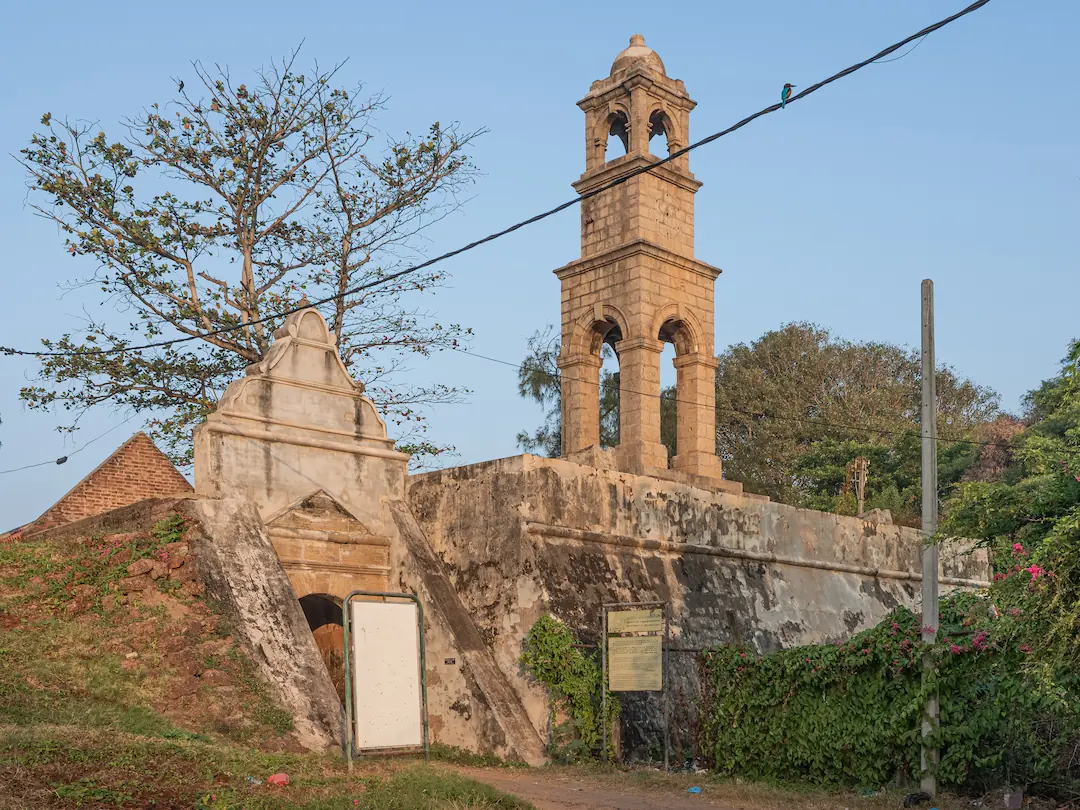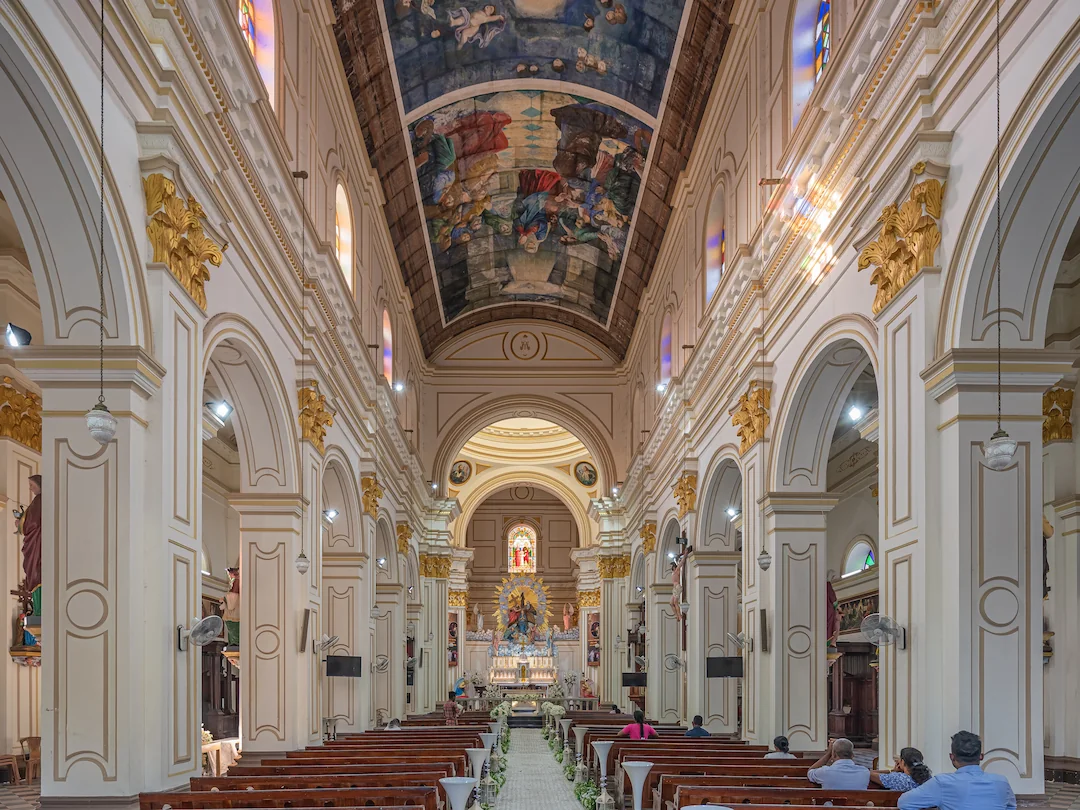Negombo, with its coastal charm and deep-rooted history, is a place where the past and present come together beautifully. The city has soaked up influences from centuries of colonial rule, as well as Sri Lanka’s vibrant culture. I’ve explored some of the most historically rich sites here, and each one has its own story to tell, full of interesting bits that go beyond just what you see at first glance. Let me take you through the top ten historical places in Negombo—each packed with tales that are fascinating, sometimes strange, and always deeply connected to the city’s unique vibe.
Negombo Dutch Fort

The Negombo Dutch Fort is small, but it’s packed with history. Originally built by the Portuguese in the 16th century, it was later taken over and remodeled by the Dutch. Today, only part of the fort remains, and it’s been repurposed as a prison! Imagine that—a place once meant to defend against invaders now houses criminals. It’s a little ironic, but that’s part of what makes Negombo’s history so quirky. Though the fort walls are still there, you can feel the layers of history in the stones, from battles to changes in power. It’s a silent but strong reminder of the city’s colonial past.
Angurukaramulla Temple
This temple is massive—seriously, you can’t miss the giant Buddha statue greeting you at the entrance. It’s over 300 years old and filled with fascinating murals that tell stories from Buddhist lore. There’s something peaceful about walking around Angurukaramulla, but at the same time, it’s like stepping back in time. One of the coolest parts is the library inside, which holds ancient palm-leaf manuscripts. It’s like holding history in your hands! This temple has seen centuries of devotees come and go, but it still feels alive with tradition.
St. Mary’s Church

St. Mary’s Church is one of those places that takes your breath away. It’s huge, for one, but what really stands out are the ceiling frescoes. These frescoes are unlike anything else you’ll see in Sri Lanka—they’re bright, bold, and full of local touches. The church itself has a blend of Dutch architecture, but it was only completed in the early 20th century, which gives it a unique mix of old and newer elements. It’s a peaceful spot, but also deeply connected to the Catholic history of the city, serving as a cornerstone of the local community for centuries.
Dutch Canal (Hamilton Canal)
Now, this is one place that connects so many dots in Negombo’s history. Built by the Dutch, this canal was once a bustling trade route, with spices and goods floating up and down the water. It’s a little quieter now, but when you’re walking or taking a boat ride along the canal, you can almost hear the echo of ships and carts moving through. The Dutch didn’t just build it for commerce, though—it was also a way of managing the water in the city, making sure the coastal land didn’t flood. It’s a practical piece of history that still serves the city to this day.
Negombo Lagoon
Negombo Lagoon isn’t just a place to watch the sunset (though it’s perfect for that too). It’s been a key part of the local fishing industry for centuries. The fishermen here still use traditional methods that have been passed down for generations, like those big square fishing nets you’ll see along the shore. The lagoon is brimming with history—every catch, every boat, every ripple in the water tells a story. It was also a key trading point for the Portuguese, Dutch, and later the British, connecting the city to global trade routes.
Muthurajawela Marsh
This place is like a hidden gem in Negombo, a massive wetland that feels untouched by time. It’s one of the largest marshes in Sri Lanka and has been around for hundreds of years. The marsh was actually used by the Dutch for irrigation and managing floodwaters, which shows how the colonial powers worked with the natural environment. Today, it’s a protected area, rich with wildlife. But it’s more than just nature—it’s a living piece of history, reminding us of how humans and nature have always worked together (or sometimes, not so well!).
St. Sebastian’s Church
This Gothic-style church looks like something straight out of Europe, but it’s right in the heart of Negombo. Built in the late 1800s, St. Sebastian’s Church stands tall with its striking spires and intricate design. When you step inside, the cool stone walls and stained-glass windows make you feel like you’ve entered a different era. It’s a beautiful example of how colonial powers brought their own culture to Sri Lanka, blending it with local traditions. The church still plays an important role in the community, and it’s hard not to be in awe of its grandeur.
St. Anthony’s Church (Kochchikade)
This little gem has been standing since the 19th century and has become a spiritual home for many in the city. St. Anthony’s Church isn’t just a place of worship; it’s also a historic site that showcases the spread of Christianity in the region. The church has a cozy, almost humble feel compared to the larger ones in the city, but that’s part of its charm. It’s a place where you can really feel the connection between the past and present, and it’s a quiet retreat from the hustle of the city.
Negombo Fishing Village
Negombo’s fishing village is like stepping into a time capsule. The boats bobbing in the water, the fishermen repairing their nets, and the vibrant fish markets all feel like they haven’t changed much over the years. Fishing has always been the backbone of this coastal city, and it’s amazing to see how much of the traditional lifestyle is still preserved. Walking through the village, you get a real sense of the community and its deep connection to the sea. It’s raw, real, and a living piece of history.
Old Catholic Cemetery
Now, visiting a cemetery might sound a little morbid, but the Old Catholic Cemetery in Negombo is a must-see for history buffs. Established during the Dutch colonial period, this cemetery is full of beautifully carved headstones and epitaphs that tell stories of the people who lived and died in Negombo over the centuries. Walking among the graves, you can almost feel the weight of the city’s colonial past, from missionaries to local elites who shaped Negombo’s history. It’s a quiet, reflective place that offers a different kind of historical insight.
Negombo is more than just a beach town—it’s a city with a deep, layered history. Each of these places gives us a window into the past, showing us how the city evolved through colonialism, religion, trade, and tradition. Exploring them is like piecing together a puzzle, with every site offering a different part of the story. If you ever find yourself wandering through Negombo, make sure to check out these spots. They’ll give you a fresh appreciation for how much history this small coastal city really holds.
